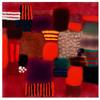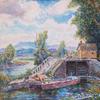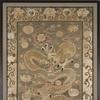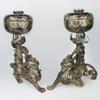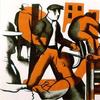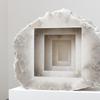Traveling Exhibition Illustrates Picasso, the Writer
- TOKYO, Japan
- /
- June 15, 2020
“Had I been born Chinese, I would not be a painter, but a writer. I would write my paintings." - Picasso
From Tuesday June 16, the Instituto Cervantes in Tokyo, in collaboration with Museo Picasso Málaga, will be hosting a traveling documentary exhibition on the poetic side of Picasso. The exhibition was seen last year at Instituto Cervantes in Beijing, and then at the Miguel de Cervantes Library in Shanghai.
The Malaga-born genius who did so much to change the course of Western art history during the 20th century was also a poet. Picasso, the Writer therefore takes a look at this lesser-known side of the Spanish artist. On Monday, an online conversation took place between Japanese art historian and honorary professor at the University of Waseda, Yasujiro Otaka, and José Lebrero Stals, curator of the documentary exhibition and artistic director of Museo Picasso de Málaga.
“Picasso’s poetry and his other works of writing are often overlooked in discussion of his long and varied career. Despite being immersed in the literary circle for many years, Picasso did not produce any writing himself until the age of 54,” Stals has noted.
Picasso’s literary career began in 1935 and he created more than 350 poems. In his own words, he had left everything behind — oil paintings, sculptures, prints, and was totally devoted to writing poetry almost every day.
“His poetry is unpunctuated, mixed with Spanish and French; and this improvisational writing became the inspiration of many of the images he later created,” said Professor Yu Zhongxian, the French translator of Picasso’s poetry, who won the Lu Xun Literature Prize of Translation in China.
The exhibition, which runs until September 30, examines how Pablo Picasso used pencil and Indian ink in a highly original way to paint words and then to transform them into pictograms that tell us about his world and memories. Picasso, the Writer features facsimiles, photographs and publications relating to Picasso’s literary output, along with poems and a documentary specially produced for the occasion, in which Spanish authors and intellectuals, including the director of the Instituto Cervantes, poet Luis García Montero, reflect upon Picasso and his written work.
To illustrate the relationship between Pablo Picasso and Japan, and their mutual inspiration, a letter from Japanese author Kuninosuke Matsuo to Pablo Picasso held in the Musée national Picasso-Paris collection will also be on display, along with six original ceramics by Picasso, courtesy of art collector Toshiyasu Fujinawa, President of the Yoku Moku company. To coincide with the exhibition, a catalogue has been published containing essays by Japanese experts who have contributed to the project during its time in Japan. For next year, a performance in Japanese of Picasso’s play “Desire by the Tail” is planned. The exhibition can be visited in limited groups booked in advance, and in compliance with the health and safety measures set by the Cervantes Institute in Tokyo. For full information on how to see the exhibition in Tokyo; https://picasso-escritor-junio16-24.peatix.com/
For a collection of Picasso's surrealist poetry: The Burial of the Count Orgaz & Other Poems.
"orange blossom jasmine cabinet perfumed with pine scent little sugar cube stuck sentry-like on point of bayonet drawn from his gaze and bleeding honey from his fingers on the dove's wings burning at lake bottom in the skillet of his eyes shows up exactly at the happy hour with its flower needle pin prick poised to touch the sea's snout blue bull winged incandescent spread out at the ocean's rim." - Picasso



